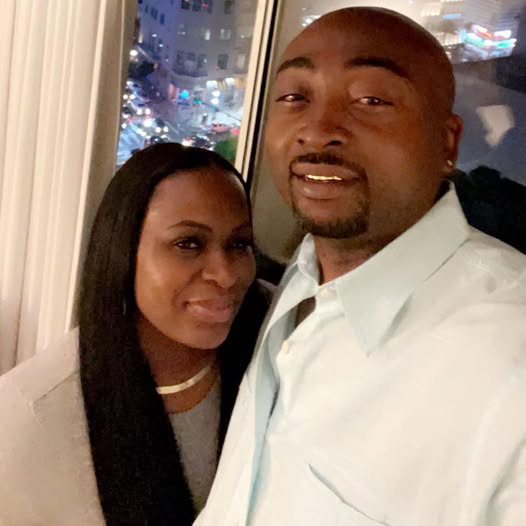The final moments of Rochelle Lewis’s life played out in the very place where she should have felt safest—her home. On Tuesday night in Haynesville, the 48-year-old mother was gunned down by her estranged husband, Shamarcus Lewis, in front of their two children. The killing unfolded in a haunting intersection of personal trust and systemic failure—despite Rochelle’s existing restraining order against Shamarcus, and despite a judge’s prior order requiring him to wear an ankle monitor after a November domestic abuse and child endangerment arrest.
Rochelle had once believed in Shamarcus’s ability to change. Court records reveal that she told law enforcement she didn’t fear him. She advocated for counseling, not incarceration. But that belief—that someone who had once hurt her could be healed—proved devastatingly wrong. Her hope, documented and sincere, was not enough to prevent what would ultimately become a calculated act of lethal violence.
Shamarcus entered the home Tuesday night and opened fire, delivering multiple gunshot wounds to Rochelle, even as their children—ages 13 and 15—were present. In an act of extraordinary bravery, one of the children dialed 911, summoning emergency responders to a scene of unspeakable trauma. By the time they arrived, it was too late. Rochelle Lewis was dead.
The impact on the children cannot be overstated. To witness the violent killing of a parent—especially by the hands of the other—is to endure a trauma that reshapes the course of one’s life forever. The children were not physically harmed, but what they experienced will remain with them in a way few can comprehend. Their identities are being protected, but the gravity of their trauma has placed them at the center of a growing conversation about domestic violence, legal accountability, and the systemic cracks that allowed this tragedy to occur.
Following the shooting, Shamarcus Lewis fled, triggering a manhunt that would end on Interstate 20 after a tense 10-minute standoff with law enforcement. Confronted and cornered, Shamarcus shot himself, and was taken into custody in critical condition. As of the most recent reports, he remains under hospital care, facing the weight of his actions, though it remains unclear whether he will survive.
What remains indisputable is this: every warning sign was there. Shamarcus had been arrested for domestic violence. He had endangered his own children. A restraining order was issued. A court ordered him to wear a GPS ankle monitor. In theory, Rochelle had legal protections. In reality, those protections failed to shield her from a determined killer.
The irony of the court documents—where Rochelle is quoted as saying she “didn’t fear him”—is chilling. That statement, borne not out of naivety but of compassion, reflects the psychological complexity of domestic abuse. Many victims oscillate between fear and love, hope and dread. Rochelle, like so many, believed counseling might lead to reform. She did not believe her estranged husband would murder her. But belief, tragically, is no substitute for safety.
In recent years, Haynesville, like many American communities, has grappled with the rising stakes of domestic violence. Despite a growing array of legal tools—restraining orders, mandated ankle monitors, counseling referrals—there remains a wide gulf between what the law mandates and what is enforced or effective in real life. GPS monitors, for instance, are only useful when actively monitored. It remains unknown whether Shamarcus’s device was functioning, being tracked, or even worn at the time of the shooting.
Advocates for domestic violence prevention are now pointing to Rochelle’s death as another devastating case study in the limitations of the system. “This isn’t about paperwork. This is about lives,” one advocate said in the aftermath. “Rochelle Lewis should still be here today.”
In the days to come, attention will turn to the investigation, the children’s welfare, and whether the court had done everything possible to enforce its protections. If Shamarcus survives his self-inflicted wound, he will almost certainly face charges including first-degree murder, child endangerment, and firearm-related offenses. But for Rochelle, justice will come too late.
Her name now joins the long and sobering list of women killed by men they once loved, by men the system knew were dangerous. The tragedy of Rochelle Lewis is not just personal—it is institutional. It is the story of a mother, a believer, a woman trying to keep her family intact in the face of escalating danger. And it is the story of a legal framework that failed her.
For the children left behind, healing will be a long and complicated journey. Support networks are reportedly being mobilized to assist them, both emotionally and logistically. But no amount of therapy or community outreach can undo what they witnessed on that terrible night.
Rochelle Lewis was 48 years old. She was a mother, a wife who wanted reconciliation, a woman with faith in change. Her life, ended violently in front of her children, is now a sobering reminder that legal protections without enforcement are no protection at all.

